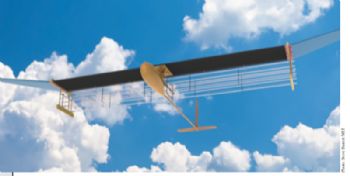
Researchers at the Massachusetts Institute of Technology (MIT) (
www.mit.edu) in the USA have developed an aircraft engine that has no moving parts, produces no harmful exhaust fumes and makes no noise — by adapting a technology previously only used in spacecraft.
Ion drives work by emitting a stream of charged particles that propel the vessel forward.
As well as being carbon-neutral, they are less likely to go wrong and are cheaper to maintain than conventional engines, because they have no propellers, turbines or fuel pumps to break down.
The only problem is that, in Earth’s gravity, the thrust produced by the drive is not enough to overcome the weight of the batteries needed to power them — until now.
The new research, published in Nature, paves the way for the possibility of silent drones in the very near future. With further advances in materials and power conversion, silent crewed aircraft and eventually commercial flights could also be ‘on the horizon’.
All aircraft engines work by pushing something backwards, so that the craft moves forward. Usually this is air, whether cold air driven by electric propellers or hot air fired out of jet engines.
Ion propulsion instead sends out charged particles (or ions) generated in the gap between two electrodes with a high voltage in between.
The ions interact with the air, creating an ionic wind that is sent backwards, propelling the aircraft forward.
As with propeller-driven solar-powered aircraft, ion-drive craft are powered by electricity, so they do not need to carry combustion fuel — just batteries.
The new research shows that, with some clever modifications to the battery set-up and the way the electrical power is converted, it is possible to reduce the battery weight enough to ‘make this technology fly’.